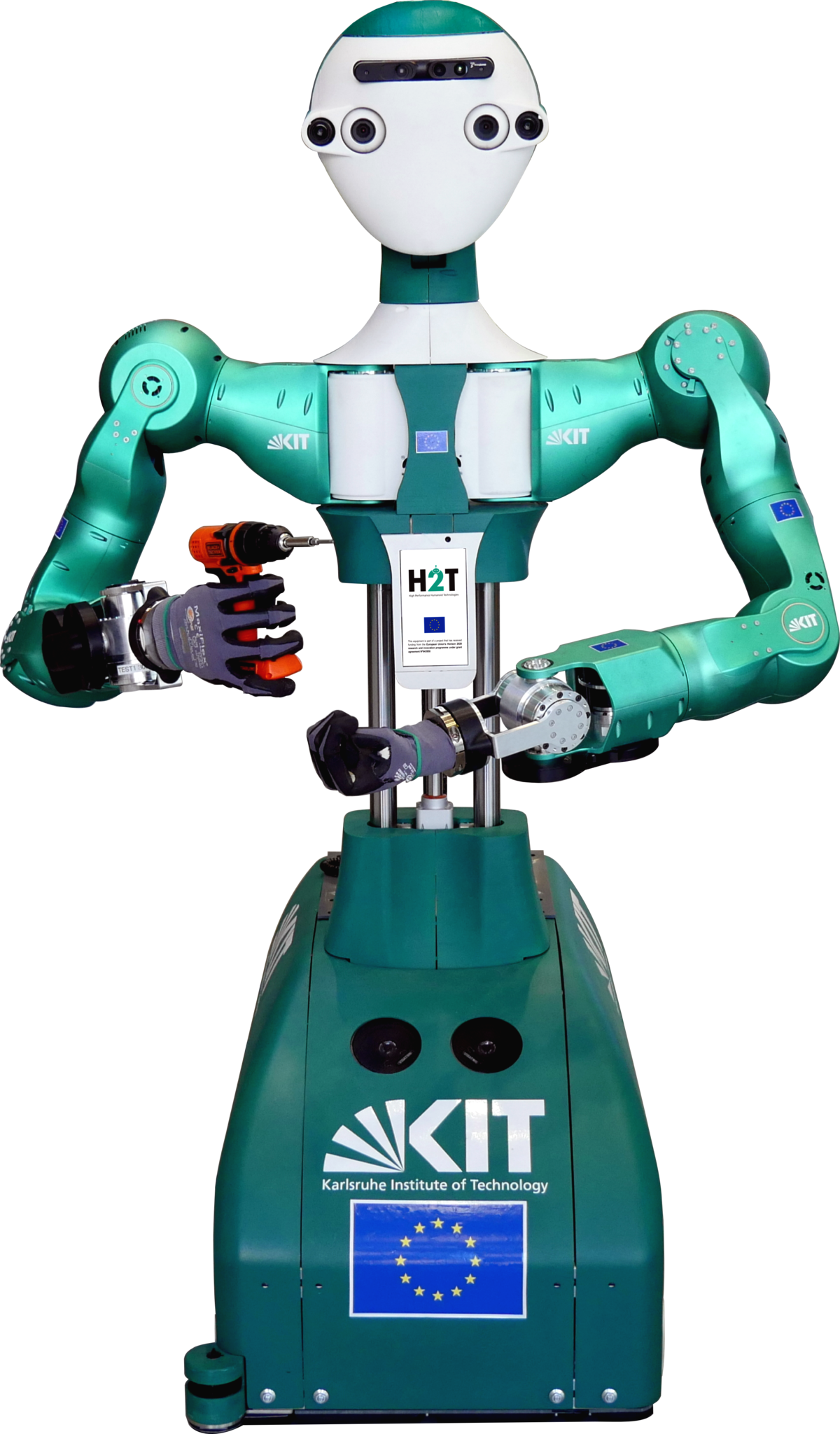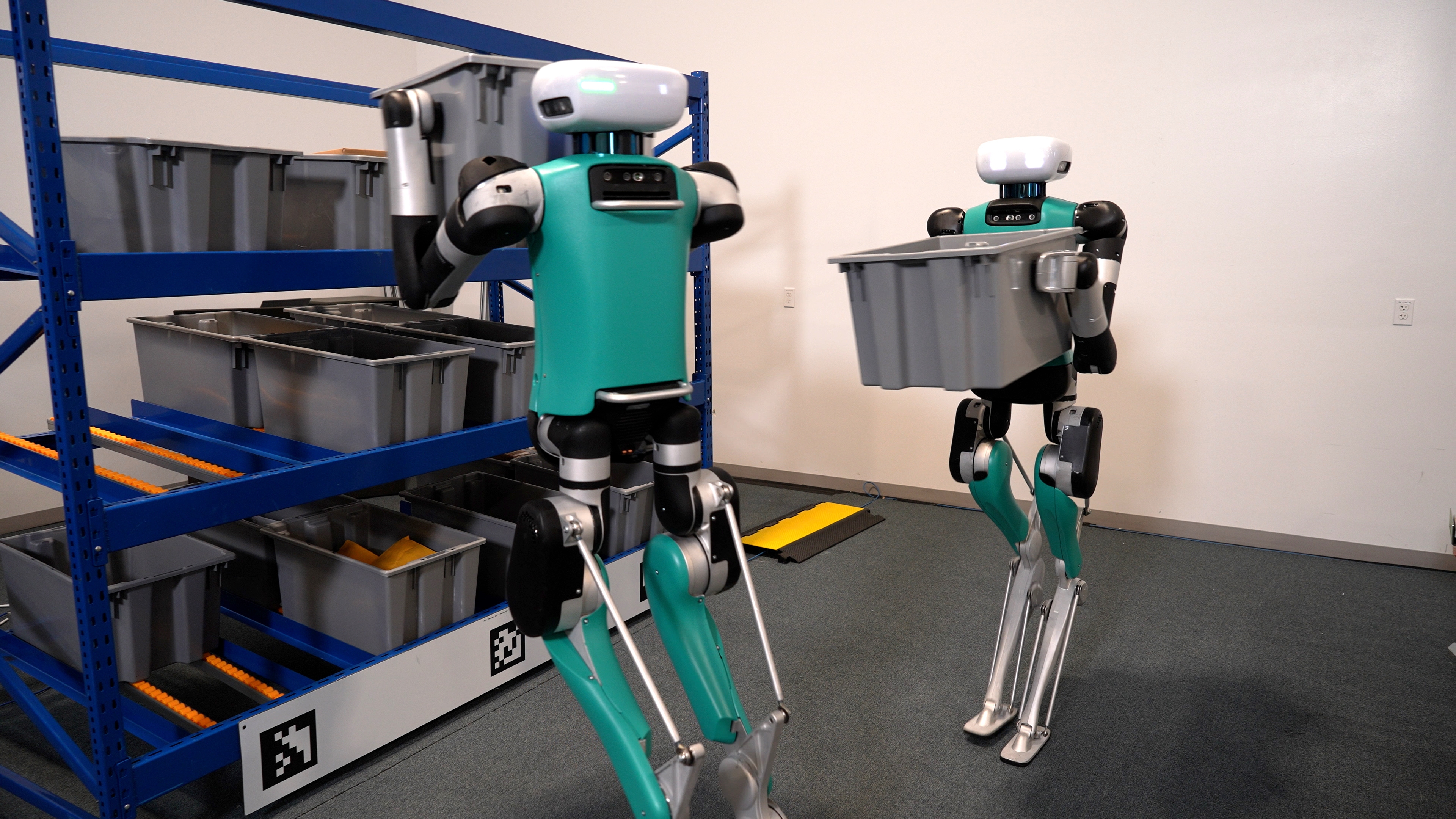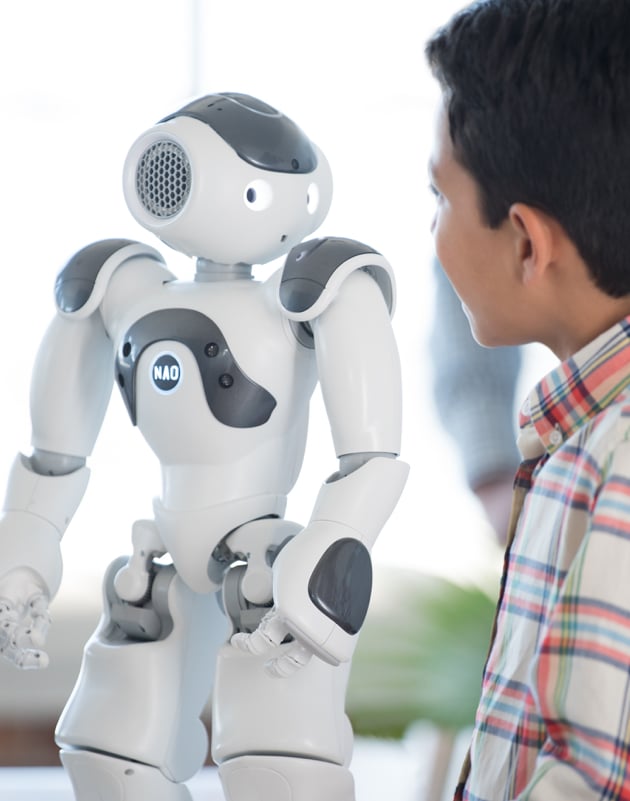Humanoid Robots And Their Potential Impact On the Future of Work
The humanoid robot market, valued at $1.8 billion in 2023, is set to surge past $13 billion within the next five years. This growth is driven by breakthroughs in AI and the increasing incorporation of human-like features. Notably, Tesla’s Optimus robot, designed to tackle “dangerous, repetitive, and boring tasks,” underscores the escalating interest and investment in this field. Elon Musk even predicts that the market value of Tesla’s humanoid robots may eventually exceed that of its electric vehicles.
Amid this growing market, the partnership between OpenAI and the robotic startup Figure represents a significant leap forward. With robust venture capital backing, Figure aims to integrate humanoid robots into both professional and personal environments, bringing the vision of human-like robots closer to reality.
“Robotics are beginning to cross that line from absolutely primitive motion to motion that resembles animal or human behavior.” ~J. J. Abrams
Despite their potential, humanoid robots face considerable implementation challenges. Unlike traditional robots, which are engineered for specific tasks, humanoid robots must achieve versatile and reliable movements, which involves intricate engineering. Advances in AI, particularly in computer vision and natural language processing, are crucial in overcoming these obstacles.
Once relegated to science fiction, humanoid robots are on the edge of transforming the workplace. These advanced machines, designed to replicate human movements and interactions, promise to reshape work environments and users’ engagement with technology.
Applications of Humanoid Robots Across Industries
Education and Research
Humanoid robots can be used in education in tailoring learning. This implies acting as interactive tutors that will use customized lessons to incorporate the students and adjust accordingly. In research, these robots have contributed a great deal in the understanding of human behavior, cognition, and social interaction. Imitating human motion and expressions makes it easier to make useful conclusions about human psychology and social dynamics.
Healthcare and Rehabilitation
There is huge potential for humanoid robots in healthcare: they can support caregivers in patient care, become companions for the elderly, or even support people with disabilities in daily tasks. Such robots can be equipped with advanced sensors and dexterity to make them capable of supporting delicate procedures, such as assisting surgeons in an operation or carrying out physical therapy with a patient. They may also take care of checking vital signs, alert patients to take medication, and help in telemedicine consultations, therefore supporting remote healthcare services.
Entertainment and Social Interaction
Other applications of humanoid robots include the entertainment sector. The robots can be used to create complex dance routines, interactive performances, or even film acting in movie and show productions. Further, they act as companions to man, providing both emotional support and social interaction. With their unmatched sense of understanding and response to human emotions, they offer companionship in a meaningful sense in every possible setting.
Customer Service and Hospitality
Humanoid robots are making a difference in customer service and hospitality. They act as ambassadors and guides in shopping malls, hotels, and airports. Typically, they are programmed to make announcements, provide recommendations, and help customers in need. Equally important is handling routine tasks like checking in, room service, or at the concierge desk, freeing human personnel for more complex interactions. The ability of these robots to understand languages and gestures makes them superb at bridging communication gaps and meeting the diversified needs of different customers.
Manufacturing and Industrial Automation
In manufacturing, humanoid robots offer new ways of automation. They help in repetitive, physically burdensome tasks such as assembly, picking and packing, and quality control. Their advanced sensors and machine learning capabilities help them work with precision in dynamic environments. The integration results in higher productivity, lower costs, and improved safety for workers.
Human-Robot Collaboration and Interaction
Military Robots: The US Army deploys the RoMan robot to detect and overcome obstacles in its way, which can include improvised explosive devices. RoMan uses 3D sensor data for the identification of potential threats and obstacles. It is fitted with mantis-like arms developed by NASA’s Jet Propulsion Laboratory and powered by deep learning algorithms.
Manufacturing Robots: This means that robots have come back to their roots in manufacturing, a great deal more advanced than the early models used by General Motors back in 1962. Symbio Robotics supplies its robots to leading car manufacturers like Ford and Toyota, which are fielded for much more than just welding and spray painting. It includes component installation, part picking, system testing, fault detection, and final assembly. This has also been the most challenging phase of manufacturing, being complex and needing tight control; recent advances in robotic dexterity have helped here too.
Kitchen Robots: Fast-food chains are rapidly implementing automation in an effort to raise the speed of service while reducing costs. Miso Robotics has developed a kitchen robot that Caliburger and Walmart have tested, as well as at Dodger Stadium, called Flippy, that assists human chefs by flipping burgers and frying chicken. It can also run continuously for 100,000 hours.
Healthcare Robots: Moxie is a cobot from Diligent Robots that supports non-clinical tasks, such as deliveries to the hospital, restocking, and collection of samples. Moxie integrates with electronic healthcare records to be proactive, leaving human staff to focus on providing care and compassion to patients.
Agricultural Robots: The robots do hazardous or tedious work in agriculture. Independent flying robots plant seeds, spray fertilizers and pesticides, monitor for invasive species. Burro, a US-based startup, is working on “people-scale” collaborative robots that use computer vision and GPS to assist agricultural workers. The agricultural robotics market will reach up to $11.58 billion by 2025.
Warehouse Robots: Amazon’s warehouse robots show how humans and machines can work together. Known as robotic pick assistants, the machines bring items to human pickers to package and label, toting along entire shelving units without bumping into anything. A new model, called “Bert,” that’s being tested will roam the factory floor more freely. Since putting in the robots in 2012, Amazon has created more than a million human jobs.
Top Examples of Humanoid Robots Used
#1 ARMAR-6 (Karlsruhe Institute of Technology)

Developed by researchers at the Karlsruhe Institute of Technology in Germany, ARMAR-6 is a humanoid robot designed for industrial applications. It can use tools such as drills and hammers and is equipped with AI technology to learn how to grasp objects and hand them to human colleagues. ARMAR-6 can also perform maintenance tasks like wiping surfaces and can request assistance when necessary.
#2 Digit (Agility Robotics)

Digit, a humanoid robot from Agility Robotics, is designed to perform tasks such as unloading trailers and moving packages. It features fully functional limbs that enable it to crouch and squat to pick up objects, adjusting its center of gravity based on size and weight. Surface plane-reading sensors help Digit find the most efficient path and avoid obstacles. In 2019, Agility partnered with Ford to test autonomous package delivery. In 2022, the company raised $150 million from Amazon and other investors to facilitate Digit’s integration into the workforce.
#3 Jiajia (University of Science and Technology of China)
Developed by researchers at the University of Science and Technology of China, Jiajia is the first humanoid robot from China. Researchers spent three years creating Jiajia. Chen Xiaoping, the lead developer, announced during Jiajia’s 2016 unveiling that future developments would include the ability to cry and laugh. Jiajia’s human-like appearance was modeled after five USTC students.
#4 NAO (Softbank Robotics)

Softbank Robotics’ first humanoid robot, NAO, serves as an assistant across various industries, including healthcare and education. Standing 2 feet tall, NAO is equipped with two 2D cameras for object recognition, four directional microphones and speakers, and seven touch sensors to interact effectively with people and its environment. Capable of speaking and conversing in 20 languages, NAO aids in creating content, teaching programming in classrooms, and serving as an assistant and patient service representative in healthcare settings.
Differences Between Humanoids and Traditional Robots
Manufacturers globally have invested billions in traditional industrial robots, including Cartesian, SCARA, and six-axis machines. Transitioning to humanoid robots will be gradual rather than immediate.
Traditional robots excel in navigation and transport tasks, whereas humanoids provide a broader range of functions requiring complex manipulation and interaction in human-centered environments. Humanoids can perform tasks independently and bring adaptability and intuitive operation due to their human-like form.
Despite promising pilot projects, widescale deployment of humanoids in assembly plants is expected within three to five years. Labor shortages have spurred interest in humanoid technology. Joe Liu, managing director at Accenture, invested in Sanctuary AI, a developer of a general-purpose humanoid robot called Phoenix, which envisions humanoids working alongside AMRs and cobots in factories. Humanoids will automate tasks that traditional robots cannot, complementing and collaborating with human workers.
Also Read: Generative AI in Healthcare: Key Drivers and Barriers to Innovation
How AI Enhances Humanoid Robots
AI integration, particularly through advanced language and vision models, significantly enhances humanoid robots’ capabilities. By leveraging AI-powered reasoning and planning algorithms, these robots can interpret and respond to complex commands and scenarios, mimicking human-like behavior.
For instance, a humanoid robot’s ability to understand natural language commands, such as “I’m hungry,” and respond by offering food demonstrates its reasoning and inference capabilities enabled by AI. While current models may not achieve full artificial general intelligence, they represent significant progress toward more sophisticated reasoning and decision-making.
AI models like GPT-5 and advanced vision systems contribute to the multi-modality of humanoid robots. These models enable robots to perceive and interact with their environment more effectively. The fusion of language understanding, visual perception, and motor skills enhances the versatility and adaptability of humanoid robots in various workplace scenarios.
Also Read: Generative AI and Modern Advertising: Things to Keep in Mind
Future Trends and Developments in Humanoid Robotics for the Workplace
Advancements in Artificial Intelligence and Machine Learning
Artificial Intelligence (AI) is driving the future of humanoid robotics in the workplace. Expect substantial advancements in AI algorithms that enhance robots’ abilities to understand natural language, recognize facial expressions, and learn from interactions. Machine learning will allow robots to autonomously adapt to new tasks and environments, continually improving their performance and efficiency.
Enhanced Human-Robot Interaction
Future developments will focus on refining Human-Robot Interaction (HRI) to make workplace robots more intuitive and effective. Innovations will improve robots’ ability to interpret and respond to human gestures, voice commands, and facial expressions. This will facilitate more natural and seamless interactions between robots and human colleagues, enhancing workplace productivity and collaboration.
Expanding Applications Across Industries
Humanoid robots are set to transform various workplace environments:
- Healthcare: Robots will assist in patient care, rehabilitation, and provide companionship in hospitals and eldercare facilities, improving both patient outcomes and staff efficiency.
- Retail and Hospitality: In these sectors, humanoid robots will enhance customer service by guiding patrons, providing information, and managing transactions, thereby elevating the overall customer experience.
- Education: Robots will support educators by offering personalized learning assistance, helping students with special needs, and providing supplementary educational resources.
- Manufacturing: In industrial settings, humanoid robots will work alongside human operators, handling tasks that require precision and dexterity, thus optimizing assembly line operations.
Technological Integration and Connectivity
The future of humanoid robots in the workplace will see increased integration with cutting-edge technologies:
- IoT and Connectivity: Robots will leverage the Internet of Things (IoT) to interact with other devices and systems, enhancing their ability to share data and perform collaborative tasks.
- 5G and Edge Computing: The implementation of 5G networks and edge computing will enable faster data processing and reduced latency, significantly improving robots’ real-time responsiveness and operational efficiency.
[To share your insights with us as part of editorial or sponsored content, please write to psen@itechseries.com]








Comments are closed.